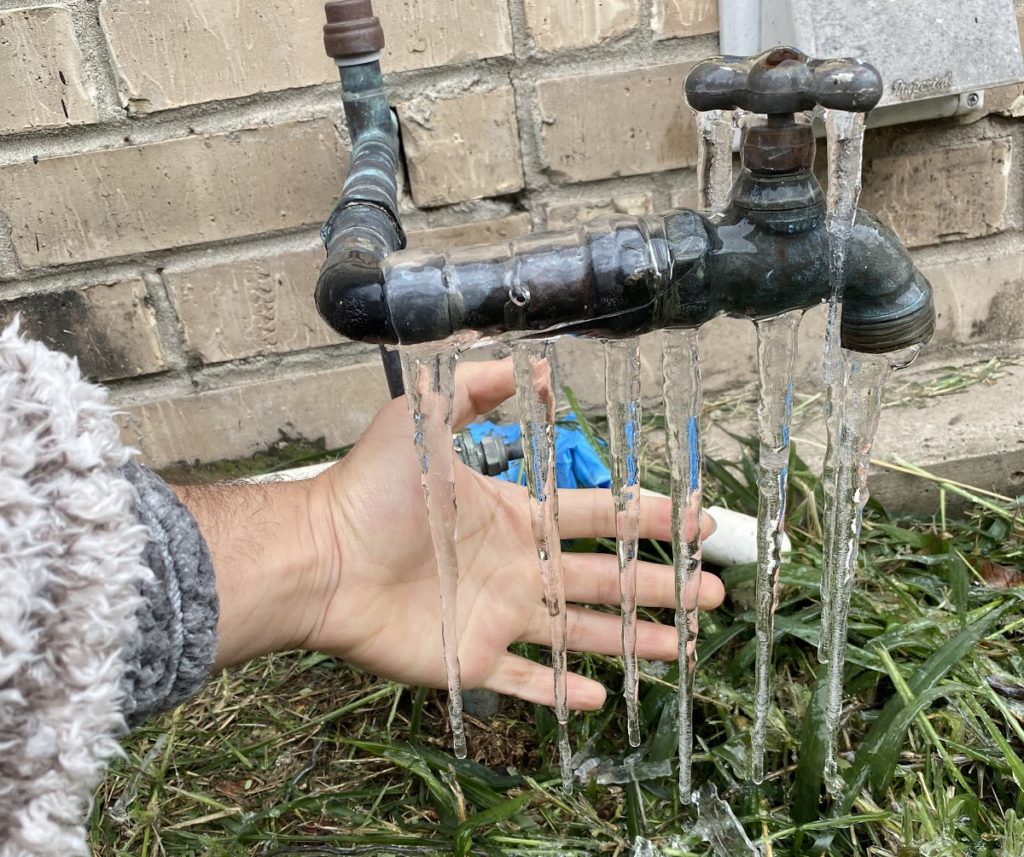
Sol Garcia | THE RIDER
Many people online speculated climate change had caused the recent winter storm that left many states, including Texas, with frigid temperatures and power outages.
A UTRGV assistant professor who specializes in climate change confirmed it contributed to the storm’s intensity.
Christopher Gabler, assistant professor in the School of Earth, Environmental and Marine Sciences, said last month’s storm was rare, but climate change researchers have predicted these weather conditions.
“The last time we had a freeze like this was 1989,” Gabler said. “What we did see was consistent with what we expect climate change is doing.”
Researchers cannot definitively say if climate change caused this latest storm, but it did influence it, said the assistant professor who has a joint appointment in the Department of Biology.
“As a professional climate scientist, I must say that I think that climate change played a very large role in what we saw,” he said. “It was a big function of having a large polar vortex, kind of, sending fronts our direction in a way that isn’t common and becomes more common under climate change.”
Although climate change has been mostly associated with global warming, it can also lead to sea-level rise, more volatility, which means weather conditions are intensified, and more severe tropical storms, Gabler said.
“It’s not clear whether we’re gonna have more storms altogether, although evidence is pointing to the fact that it’s likely we will, but one thing that all of the climate models agree on is that we’re going to have more severe storms,” he said.
People need to know they are already suffering from climate change, Gabler said. Insurance rates, such as for floods, are affected by intense storms and the sea level rising. Food costs and agriculture are also affected by climate change.
“We’re already paying for this,” he said. “The effects of climate change are here and now.”
Gabler recommends federal and state governments implement a carbon cap and trade, a fee on carbon emission after reaching a set quota. State and local governments should also winterize energy productions.
“Forcing our power-generating capacity … to winterize itself, to protect itself from freezes, like this, is one of the first and most important things that our state can do,” he said. “We’ve known that we needed to. We’ve known that this was a risk.”
Alexis Racelis, an associate professor for the School of Earth, Environmental and Marine Sciences, agrees climate change strengthened the latest storm’s extremity.
“These are all kind[s] of extreme weather that we expect to be happening more and more as part of the phenomenon of climate change,” Racelis said. “Not only are we looking at hotter summers, but we’re looking at colder winters. We’re looking at more intense hurricanes that go slower and have more water.”
Asked how officials should proceed for future storms, Racelis said they need to plan ahead.
“Locally, for example, we reached 24, 22 degrees,” he said. “We have to start thinking, ‘Well, what would it look like if we reach 15 degrees? What if it was not just for five days, but for 10 days?’ That’s the kind of preparation that we need the local officials to start thinking of.”
Racelis said individuals can help by communicating with their elected officials.
“As individuals, one of the things that we can do is start dialoguing with our elected officials and making sure that they make investments in infrastructure in preparation for more extreme weather,” he said.
Angie Rochas, an environmental sciences and art freshman, has researched this latest storm to stay informed on climate change and extreme weather conditions. She encourages others to do so, too, and hopes leaders reconsider their actions.
“The government and higher position people–they should definitely take responsibility because a lot of this climate change and global warming is a result of the bad structures and fossil-fuel burning that they have,” said the event coordinator for the Environmental Awareness Club. “Instead of simply just profiting off of it in the short-term, they should definitely look long-term and see how that not only affects them, but the people that they’re working for, because they’re supposed to be working for the people.”





